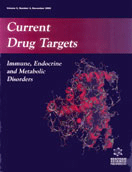Abstract
Aseptic meningitis is a rare but well-recognized complication of drug therapy. The clinical presentation of drug-induced aseptic meningitis (DIAM) is distinct. Symptoms typically include fever, neck stiffness, headache, confusion, nausea and vomiting. The major categories of causative agents are non-steroidal anti-inflammatory drugs, antimicrobials and also intravenous immunoglobulins, monoclonal antibodies and vaccines. These drugs most commonly implicated as causes of aseptic meningitis act more likely through an immunological mechanisms. However, the exact pathogenetic mechanism of DIAM is still unknown. The diagnosis of drug-induced aseptic meningitis is difficult and infectious etiologies must be excluded. In some cases the diagnosis has been confirmed by rechallenging the patient with the suspected agent. In this case, informed written consent is necessary and rechallenge must be medically supervised both to document the response and to offer medical care and advice, if required. The outcome of DIAM is generally good, usually without long term sequelae.
Keywords: antibiotics, aseptic meningitis, monoclonal antibodies, intravenous immunoglobulins
 3
3


















